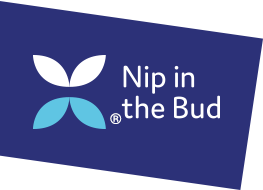TRIGGER WARNING: Please be aware that this blog discusses self-harm, including personal experiences of self-harm.
Feelings of loneliness have multiplied and deepened over the last couple of years. As sociable animals, many of us didn’t cope well with being cut off from society, let alone from our friends, family and colleagues. For youngsters it became a new norm, and the isolating nature of the lockdown shaped every part of their lives. And the more isolated people become, the more difficult it is to ask for help should they need it.
With isolation can come secrecy, and with that shame and stigma. Very often people who self-harm believe they are unique but also that they can control their behaviour. Keeping things secret not only protects them from judgement but helps them to stay in touch with this coping mechanism, however destructive it might be. Nina Veetnisha Gunnarsson from the Department of Social Work, School of Health and Welfare, Jönköping University in Sweden writes about ‘how shame and self-injury may reproduce and amplify each other, hence turning into a self-perpetuating cycle of shame and self-injury.’
Secrecy can be seen as another ‘necessary tactic’ – as bringing attention to your suffering is a huge step to take. Keeping things quiet can easily be justified as self-protection. Sometimes, too, there just isn’t the language to express the enormous suffering children are going through – self-harm is a physical release to emotional pain, which in itself is incredibly hard to articulate.
A fear of being seen as ‘weak’ or ‘weird’ is a very powerful deterrent to opening up, even if the child is able to put things into words.
One of our experts, Dr. Dennis Ougrin, describes self-harm as ‘a complex, painful and difficult behaviour, which a child is often ashamed of’. Openness and creating a safe space to talk are crucial ingredients to counter this, as children are often very scared of what their parents’ reaction would be should they share their feelings. And in all truth, a parent, guardian or teacher’s first instinct would be to try to halt this harmful behaviour immediately. But this understandable knee-jerk reaction is the wrong one. Counter-intuitively, it’s best to get a solid conversation going, develop deep trust and counter shame before taking any action. And validating their state of distress is a first step towards getting better.
In figures
Research undertaken by the American Academy of Child and Adolescent Psychiatry in 2018 revealed that:
- About 17% of all people will self-harm during their lifetime
- The average age of the first incident of self-harm is 13
- 45% of people use cutting as their method of self-injury
- About 50% of people seek help for their self-harm but only from friends instead of professionals
NICE wrote in 2019 that ‘a recent national study reported that 7.3% of girls aged 11 to 16, and 3.6% of boys aged 11 to 16, had self-harmed or attempted suicide at some point.’ That is, of course, before the disruptive horrors of Covid 19 and the isolation that brought.
A secret struggle
Luckily, there are those who have come out the other side and are happy to share their painful experiences so that others can learn from their stories. A change of schools at the age of 10 left Susannah in free-fall. Despite being a successful athlete and enjoying performing in musical theatre, the only thing she judged herself on was her weight. So she started to secretly self-harm to numb the pain, and later become bulimic – ‘another secret’. Hiding the pain from anyone else becomes part of the challenge – a deceit that separates the sufferer from others. Susannah’s mum noticed her weight loss and got her help. But Susannah wasn’t able to accept it and within two years she had attempted suicide. Fortunately, she managed to climb back from the brink with the help of a therapist who had suffered bulimia and the life-changing camaraderie of Overeaters Anonymous, where she learned that other people were going through what she was. Most of all, though, she wishes she’d had an earlier diagnosis.
Breaking the cycle of isolation and secrecy is a difficult task – but it’s not impossible. Awareness of secretive behaviour and changes in mood may be the signals but sufferers will go a long way to keep their misery private. The only pre-emptive action many adults can take is to be non-judgemental and to be accessible. How we listen to those first tentative steps towards changed behaviour will determine how the journey begins and which direction it goes in. The false belief that self-injury will always escalate to suicide should be questioned, too. As the Youth Mental Health Foundation points out, this is a way of coping with life, not ending it (they offer a free course for parents coping with the issue).
Other resources
- ACAMH Topic Guide on Self-harm & suicide
- Understanding Self-Harm, 8-min film from Nip in the Bud
- Nip in the Bud Fact Sheet
- Nip in the Bud ‘Where to go for help page’.

The charity Nip in the Bud works with mental health professionals to produce short films and fact sheets to help parents, primary school teachers and others caring for and working with children to recognise potential mental health conditions. Their goal is to increase the prospects of early intervention and to reduce the risks of those conditions becoming more serious in later years.
Their short films are accompanied by downloadable fact sheets explaining the symptoms to look out for, to spot early signs of distress which may require further monitoring, and information on how to follow up and get help through the Where to go for Help page.
This blog is reproduced with kind permission from Nip in the Bud (published 27 May 2022), please note that this is an external blog and may not reflect the views of ACAMH.